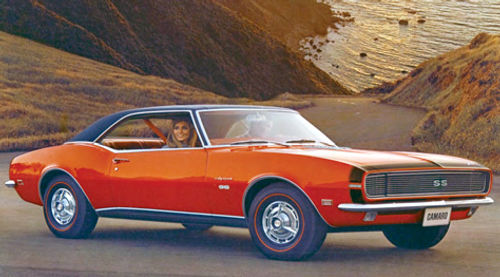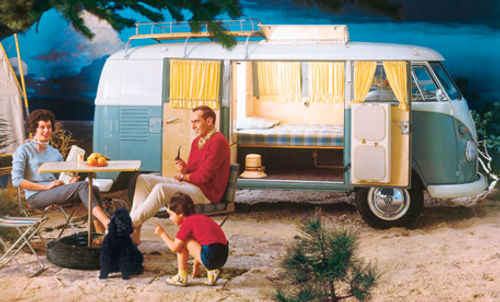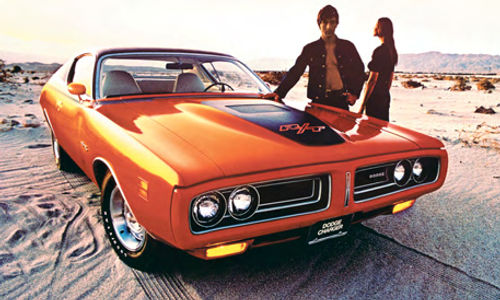Special Report Tips for a “Green” Collector Car
These Days, Everyone’s Being Asked to Help Protect Our Planet. Your Favorite Vehicle Can Do Its Part, Too.
EDITOR’S NOTE: IN an era when being “green” is a topic of everyday discussion—and sometimes heated debate—the subject even applies to cars and trucks that were built at a time when that “g” word applied to nothing more than an exterior color. And while collector vehicles make up a very small percentage of the automotive population, there are things that owners can do to make sure that they and their vehicles are as environmentally friendly as possible. Now, if you’re still on the fence about taking part, think of it this way: Not only can pollution be harmful to our environment, when it’s airborne it can damage automotive finishes. With all that in mind, here are some tips from Hagerty, the collector car insurance company, on how you and your vehicle can take part in the international “green” movement.
“There are many ways that collector car owners can improve their vehicle’s efficiency, which in turn may reduce the impact they have on the environment,” said Hagerty CEO McKeel Hagerty. “We’ve come up with some helpful maintenance tips that are easy to implement and won’t negatively affect your vehicle’s performance.”
1. Perform Regular Tune-ups: Performing your own regular tune-up or taking your classic to a shop for scheduled maintenance will make it run cleaner and result in better fuel mileage. Replacing spark plugs, cleaning carburetors and replacing air filters are all simple steps to ensure that your classic car runs better. On older cars especially, make sure to check the plug wires, rotor and distributor caps and vacuum lines, as they tend to deteriorate more quickly than those on more modern cars. You will save money in the long run and also be doing your part to benefit the environment.

2. Keep Your Collector Car Lubricated: Older cars and trucks usually have many fittings that need to be shot full of heavy grease to keep their parts moving easily. Automotive parts that move freely offer less resistance, so they use less energy. Additionally, fresh grease extends the lives of automotive parts. Your owner’s manual or handbook will tell you how often your car should be lubricated, as well as tuned. If you do not have your original book, you may be able to find it at one of the following Web sites: Chilton.cengage.com; Autopaper.com; Kenmcgeeautobooks.com; Autolit.com; Chelsealit.com.
3. Remove Fluids and Batteries From Sitting Collector Cars: If you have purchased a “parts car” or a collector car that you plan to restore and keep for an extended period of time, Hagerty recommends removing the battery and draining the car’s fluids to prevent leaks and spills. A sitting car, especially an older one, will eventually leak, leading to possible water contamination. Furthermore, battery acid can do great damage to your battery terminals, trays and brackets, not to mention its negative effect on the environment. If your car will be stored for an extended amount of time, they recommend that you remove the battery and turn it in at a salvage yard or recycler or give it to a fellow hobbyist who will put it to good use.

4. Keep Tires Properly Inflated: Due to the limited mileage covered by most collector cars, tires are far more likely to dry out and harden than wear out. Removing them from direct sunlight will slow their degradation, and with just a little regular maintenance you can keep them preserved and out of a landfill.Just as with any other vehicle, keeping your classic’s tires properly inflated will help extend tire life and contribute to your fuel efficiency. Since there is no universal tire pressure that is ideal for every car, make sure not to exceed the maximum rated pressure as listed on the sidewall of the tire.
Proper tire pressure is also an important safety issue, especially when dealing with older vehicles. Under the best of conditions, older cars can be more difficult to handle than newer ones. Improper tire inflation can increase those problems and present a risk to you and other motorists.
5. Take Proper Steps to Minimize Leaks: Classic cars often leak.But there are some simple ways to prevent harmful fluids from leaking into nearby streams and groundwater. Using a cooling system sealant or replacing/tightening a hose or hose clamps will help to minimize harmful leaks from the cooling system. Simply tightening bolts that secure cylinder heads and oil pans can often reduce or eliminate oil leaks, as can tightening the drain plug. (Be sure you don’t overtighten, however, as you can sometimes damage metal pans and covers.)
If the leaks continue, consider placing a drip mat under your vehicle to absorb the fluids. Whether you are in your garage, driveway or out using the car there are many types of drip mats available. You can find both disposable and permanent versions for purchase on a variety of Web sites including: Griotsgarage.com; Autoanything.com; Americangaragefloor.com. (And for a review of the Drip Trap Pad from CPI Divisions/Clean Plus, Inc.,see page 32 of the January issue of Auto Restorer.)
6. Rebuild Worn-out Parts: Collector vehicles, no matter how well-maintained, will eventually have parts fail and/or wear out.Rebuilding parts allows you to restore your vehicle to its original condition, while saving space in a landfill. Car parts that are frequently rebuilt on collector vehicles include carburetors, starters, generators, alternators and brake cylinders.
7. Recycle Old Fluids: Automotive fluids can contaminate drinking water and pollute lakes and streams when dumped down the drain or on the ground. Call your local municipal or county office for recycling centers near you. Many communities have recycling options for used oil and allow residents to dispose of their old auto fluids at no charge. To find a location near you, log on to http://earth911.com/recycling/.

8. Recycle Your Old Tires: Tires that are thrown away end up in landfills and can often be set afire. The smoke from burning tires is extremely toxic to the environment. Many communities have a government-sponsored recycling plan for old tires. To find these recycling locations check your local phone book under the heading “Recycling” or consult your tire dealer.
9. Recycle Your Old Battery: Lead has been banned from household paints and gasoline for years due to its high toxicity. Most car batteries still contain a large lead concentration, however, and those used in collector cars are some of the worst offenders.
Whenever you change a battery, recycle your old one. In most states, stores that sell batteries must accept and recycle those that they replace and you may receive a small payment in return. For further information on recycling batteries, go to http://www.ehso.com/ehshome/batteries.php.
10. Use Environmentally Friendly Washing Products: You will generate runoff when washing your classic vehicle; automotive cleaning products and waxes can end up in sewers and ultimately in a nearby body of water. So, use car washing products that contain no phosphates. Also, try to minimize your water use—consider purchasing a water-saving hose nozzle. (For more insight on using some “green” car care products, see page 22 of the January issue of Auto Restorer.)
And for additional details and resources regarding all of the tips mentioned here, visit hagerty.com/pamphlets and click on “Your Car and the Environment”.
















